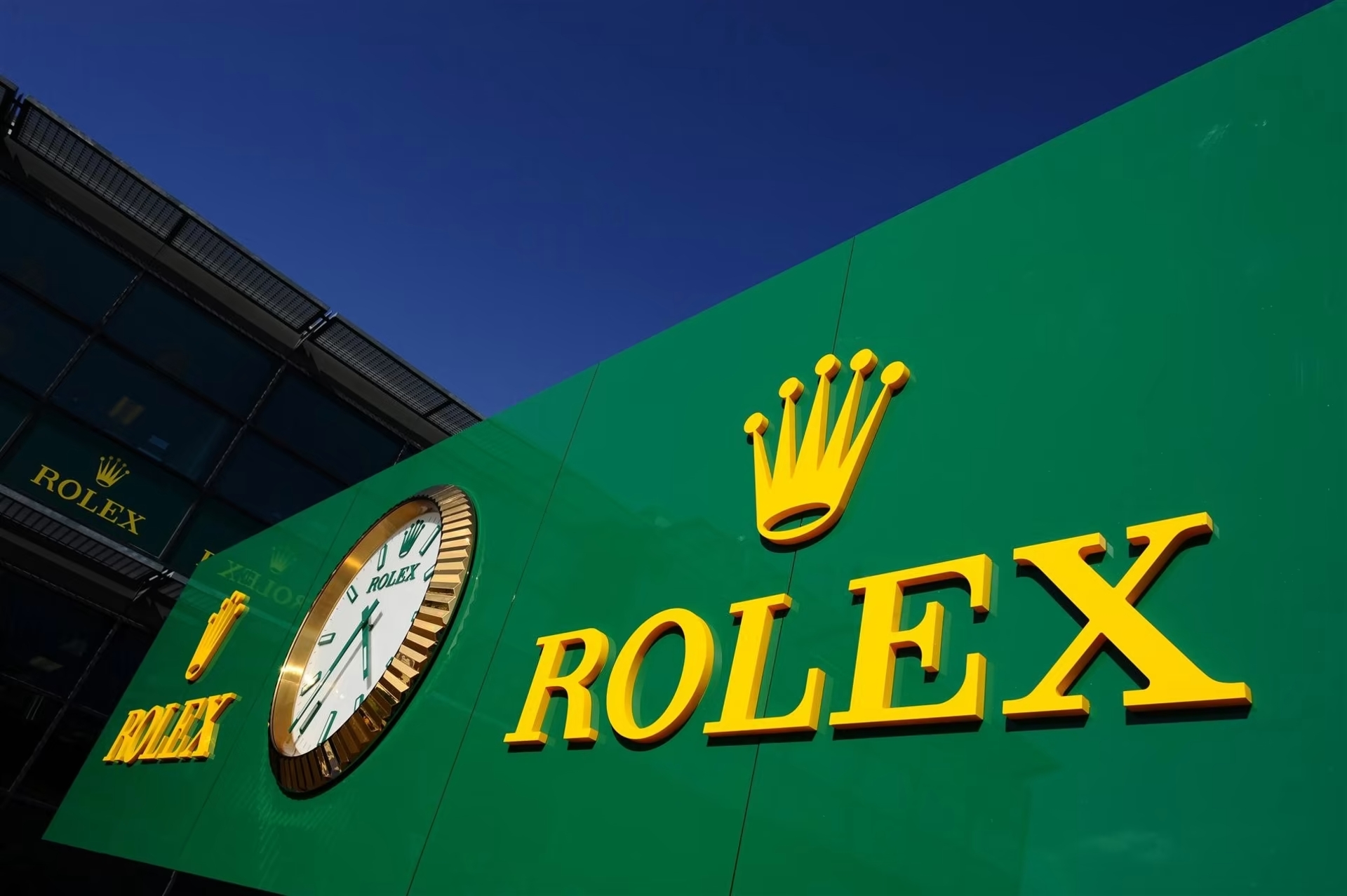
It is a scene that viewers know well—just as the 20 F1 drivers end their formation lap to take their places on the grid and start their engines, the camera pans to focus on a large clock with the Rolex Crown. For a moment, viewers watch as the hands tick precisely to the hour, with the familiar tone of the lights going off, signaling the start of the Grand Prix. This ritual, unchanged since 2013, will now alter from the 2025 F1 season onwards. Formula 1 is on the verge of a significant sponsorship shift, with reports suggesting that Rolex, the iconic timekeeper, is preparing to conclude its partnership with the sport by the end of the current season. On December 8, the brand’s Grand Prix starting clock, with the Fluted Bezel, will make its final appearance in the last race of the season at the Yas Marina circuit in Abu Dhabi.
According to Decalspotters’ tweet, the LVMH Group, which owns TAG Heuer and Hublot, is reportedly set to take over, starting in 2025. This transition signifies a substantial commitment from LVMH, allocating INR 1,253 crore ($150 million) annually with TAG Heuer for the new sponsorship deal. This sizable investment raises questions about LVMH’s future plans—whether they will continue their association with Red Bull Racing or concentrate solely on a comprehensive Formula 1 sponsorship.
TAG Heuer has a strong presence in Formula 1, especially through its longstanding partnerships with Red Bull Racing and the Monaco Grand Prix. In 2021, Red Bull renewed its timing sponsorship with TAG Heuer through the conclusion of the 2024 season. This collaboration started in 2016 when Max Verstappen replaced Daniil Kvyat mid-season and marked his debut with a memorable victory for Red Bull. In the subsequent years, Verstappen went on to win three consecutive world championships (2021–23).
TAG Heuer and Red Bull initially enjoyed a closer partnership. In the V8 era dominance of the 2010s, Red Bull had a strong relationship with engine supplier Renault. However, tensions arose with the shift to V6 turbo regulations. The strain between the team and the engine supplier escalated, prompting Red Bull to rebrand the Renault engine under the TAG Heuer name, even though TAG Heuer did not develop a new engine for that season.
Rolex did not initially hold the distinction of being the sport’s official timekeeper. Heuer pioneered the role in the 1970s. Longines assumed the responsibility in the 1980s, followed by TAG Heuer in the 1990s after a rebranding. Hublot took over in the 2000s before Rolex became Formula 1’s official timekeeper starting from the 2013 season. Since entering Formula 1, Rolex’s sponsorship started at INR 83 crore ($10 million) annually, eventually increasing to INR 417 crore ($50 million). This sponsorship encompassed trackside branding at all races and title sponsorship at specific events. Rolex’s exit from the top tier of motorsports coincides with its extensive involvement in other significant sponsorships, including the esteemed Wimbledon tennis tournament.
It’s typical for sponsors to enter and exit Formula 1, influenced by the sport’s lucrative opportunities. The upcoming shift shines a light on the ever-changing landscape of F1 sponsorship, where commercial considerations often outweigh longstanding partnerships.
Discover more stories on luxury, business, culture, and innovation here at Candle Magazine
